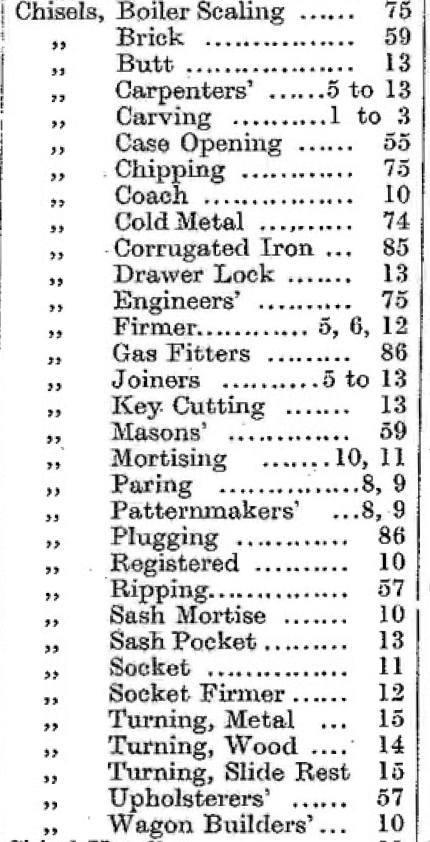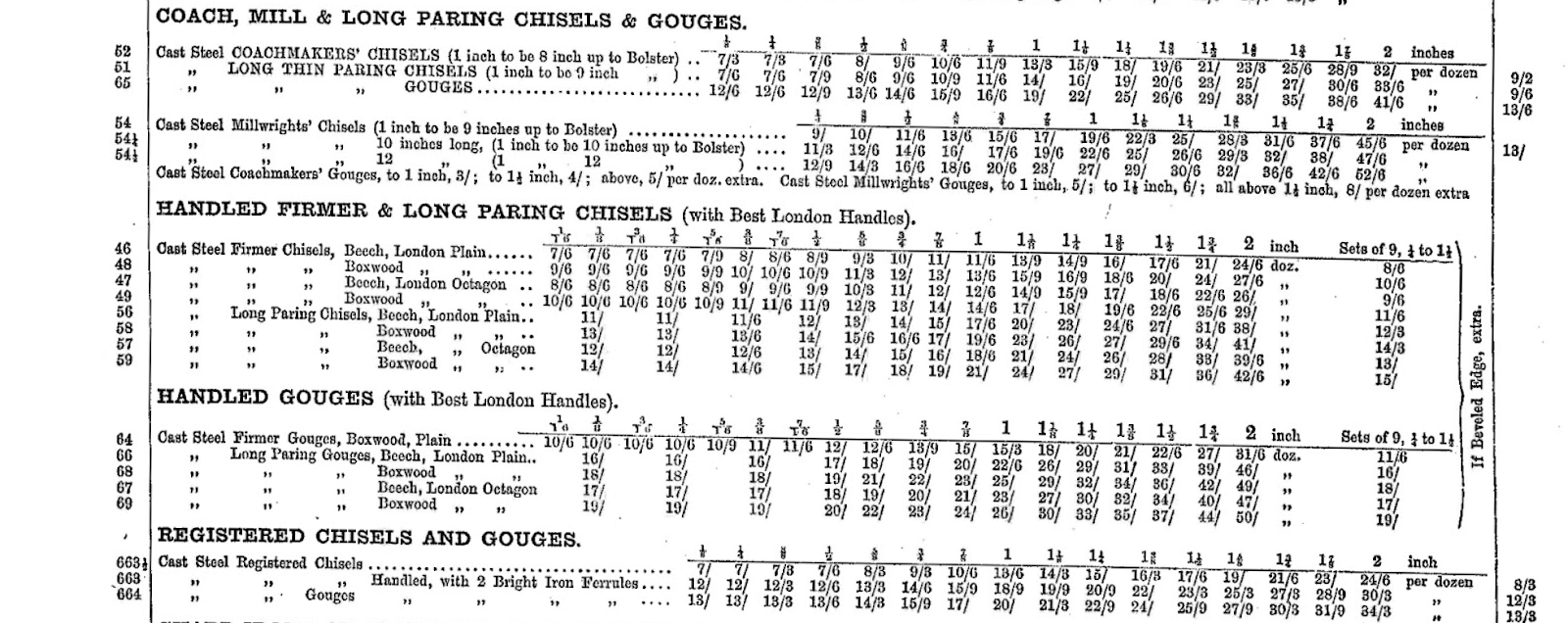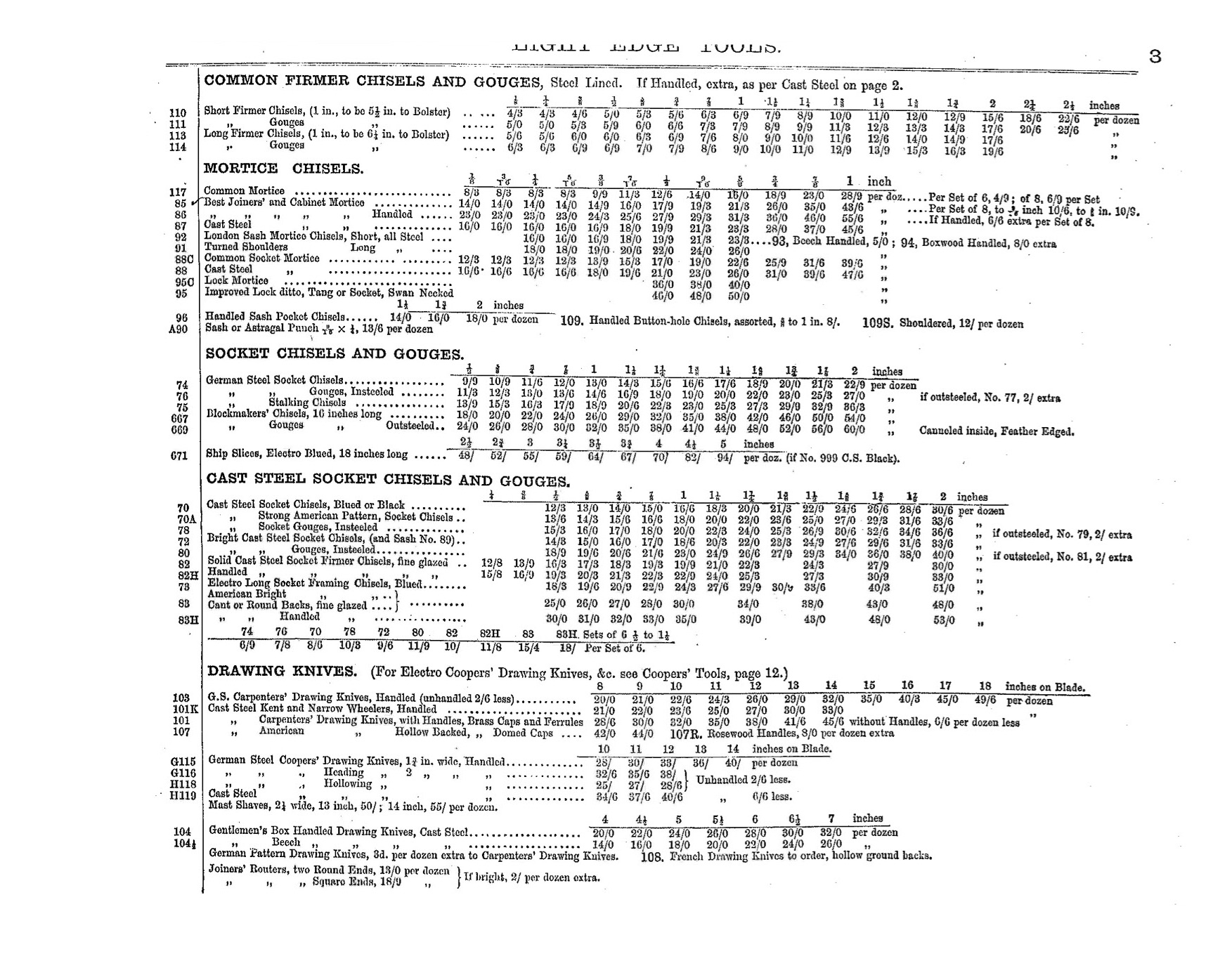We are all familiar with chisels: simple tools made from a long piece of steel with a bevelled cutting edge and a handle which is struck or pushed in order to cut or shape wood, stone or metal. Is there much more to say on the matter? Of course there is! Take for example this Marples catalogue published in 1921, which contains over 30 different types:

Chisel types
We can narrow it down a bit by focusing on woodworking chisels. This Howarth catalogue from 1884 lists coachmaker, millwright, firmer, registered, mortice and paring chisels:


Let’s start with millwright and coachmaker’s chisels. There are two schools of thought about the names given to chisels in the past: the first is that the various trades had subtly different requirements for their chisels and manufacturers created different types to meet their needs; the second says that names were largely marketing terms used to help purchasers more easily distinguish key differences in shape, size and strength.
When you consider that a chisel only has three functions – chopping , levering and pairing – the second reading makes a lot of sense: there are a number of choices you can make about design and it is helpful to distinguish them according to the expected typical use in some trade or other.
On the second reading the key difference between coach, mill and standard chisels is simply length: standard chisels tend to be 5-6” between the tip and the bolster, coach chisels are 8” and mill 9”. Perhaps the historical explanation for the terms is simply the size of the timbers typically used by these trades.
This is not to say there are no specialised trade specific chisels. One obvious example is the lock mortice chisel which is specially designed to help cut the cross-grain tenon at the bottom of the narrow deep mortices that are needed to install a lock mechanism in a door:

You can read more about some other general purpose chisels here: firmers, mortice, paring and ripping chisels
And here about some rather posh ones.